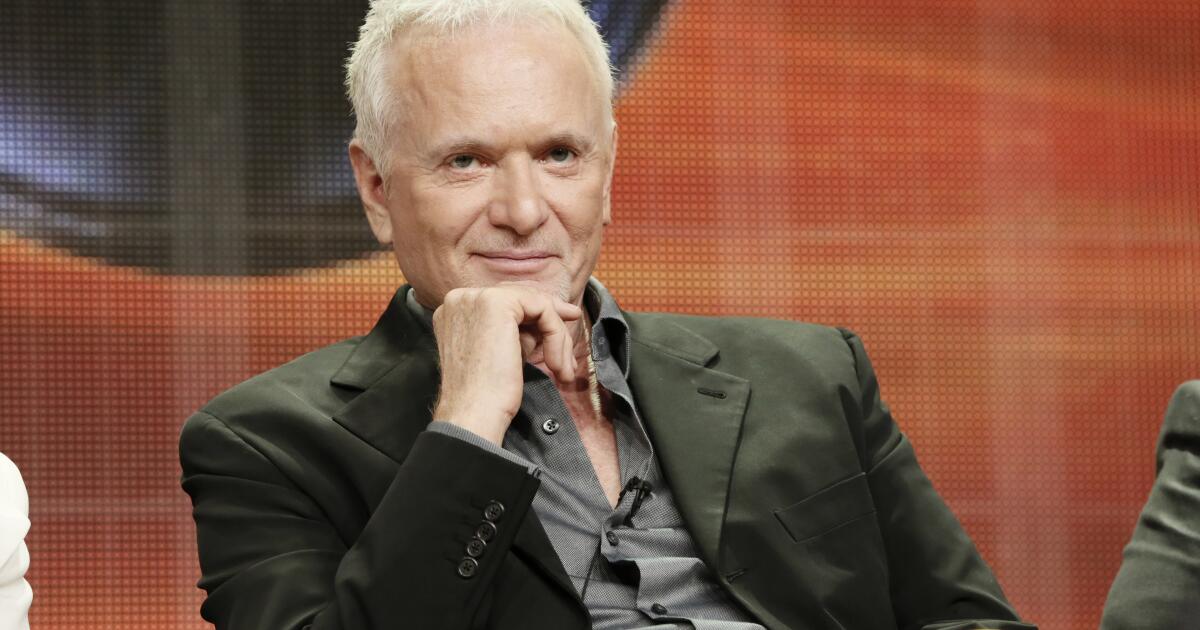Anthony Geary, the Daytime Emmy winner who played half of “General Hospital’s” supercouple Luke Spencer and Laura Baldwin, died Sunday. He was 78.
“The entire #GeneralHospital family is heartbroken over the news of Tony Geary’s passing. Tony was a brilliant actor and set the bar that we continue to strive for,” “GH” executive producer Frank Valentini wrote on Monday in two posts on X. “His legacy, and that of Luke Spencer’s, will live on through the generations of #GH cast members who have followed in his footsteps. We send our sincerest sympathies to his husband, Claudio, family, and friends. May he rest in peace.”
The actor died of complications a few days after having planned surgery in Amsterdam, the city he and spouse Claudio Gama called home, Soap Opera Digest reported.
“It was a shock for me and our families and our friends,” Gama told TV Insider exclusively Monday, saying that for more than three decades Geary had been his friend, companion and — for the past six years — his husband.
Geary notched almost 2,000 episodes on “General Hospital,” where he started as a cast member in 1978. Along the way he took a number of breaks from the show before wrapping up his “GH” career in 2015.
Even with those breaks, Daytime Emmys voters nominated Geary 17 times in the lead actor category. He took home the trophy eight times, in 1982, 1999, 2000, 2004, 2006, 2008, 2012 and 2015.
Despite their plot line beginning with Luke drunkenly raping Laura — played by Genie Francis — only to have her fall in love with her rapist, their love story became insanely popular in the early 1980s, appealing to a younger audience and saving the series from cancellation. The characters got married in November 1981. The audience for the wedding, which aired over two days, was around 30 million viewers and remains the highest-rated soap opera event in history.
Tony Dean Geary was born on May 29, 1947, in the town of Coalville, Utah, and raised in the Church of Jesus Christ of Latter-day Saints. After studying theater at the University of Utah, he began his acting career with roles on shows including “Room 222,” “All in the Family,” “The Partridge Family” and “Mod Squad” in the early 1970s. “General Hospital” cast him in 1978, but not before he added shows including “Barnaby Jones,” “The Streets of San Francisco” and “Marcus Welby, M.D.” to his resume. He racked up dozens more credits in his career, but nothing that brought him the fame that “GH” did.
When Geary left “GH” for good in 2015, some former colleagues talked to The Times about working with him.
Jane Elliot, who played another Spencer love interest, Tracy Quartermaine, recalled in 2015 that she acted with Geary when he first screen-tested for the role that was supposed to be only a 13-week arc.
“It’s always awkward with an actor you don’t know,” she told The Times. “I was walking down this flight of stars, and I pass Tony, who is doodling on a piece of paper. He’s doing tic-tac-toe. I immediately know what kind of actor he is, doing something real in an unreal setting. I went up to him, put an O next to his X, and our relationship was established.”
“Tony’s friendship and guidance has meant the world to me,” said actor Jonathan Jackson, who was only 11 when he started on the soap as Lucky Spencer, Luke’s son. “He was always extremely warm and very present, there was nothing condescending in him. He never treated me like a kid. We clicked right away.”
The “Nashville” actor returned to the show after many years away to help Geary wrap up the Spencers’ story.
”When I found out he was leaving, I knew I had to come back,” Jackson said at the time. “He was great. Having those last scenes with me were everything I hoped it would be.”
Meanwhile, on Monday, co-star Genie Francis, who is still on “GH,” remembered her former on-screen love on social media.
“This morning I woke up and went into my husband’s arms. In my sleep, my life was flashing before me and I was afraid of death.” An hour later, she wrote on Facebook, producer Valentini called to tell her that Geary had died.
“I immediately felt remorse, I hadn’t spoken to him in years, but I felt his life end in my sleep last night, and with it a big part of me, and mine,” Francis continued. “He was a powerhouse as an actor. Shoulder to shoulder with the greats. No star burned brighter than Tony Geary. He was one of a kind. As an artist, he was filled with a passion for the truth, no matter how blunt, or even a little rude it might be, but always hilariously funny. He was the anti-hero, always so irreverent, but even the most conservative had to smile. Working with him was always exciting. You never knew what might happen.
“He spoiled me for leading men for the rest of my life. I am crushed, I will miss him terribly, but I was so lucky to be his partner. Somehow, somewhere, we are connected to each other because I felt him leave last night. Good night sweet prince, good night.”


